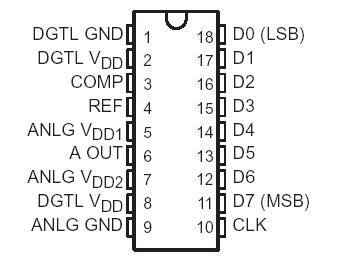TLC5602M: ApplicationPhysically separate and shield external analog and digital circuitry as much as possible to reduce system noise. Use RF breadboarding or RF printed-circuit-board (PCB) techniques througho...
floor Price/Ceiling Price
- Part Number:
- TLC5602M
- Supply Ability:
- 5000
Price Break
- Qty
- 1~5000
- Unit Price
- Negotiable
- Processing time
- 15 Days
SeekIC Buyer Protection PLUS - newly updated for 2013!
- Escrow Protection.
- Guaranteed refunds.
- Secure payments.
- Learn more >>
Month Sales
268 Transactions
Payment Methods
All payment methods are secure and covered by SeekIC Buyer Protection PLUS.

 TLC5602M Data Sheet
TLC5602M Data Sheet








